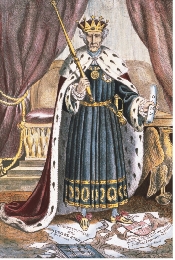Checks and Balances
Government needs to have power to do its job. However, it may use this power to do wrong. Governments have used the police to take away the rights of the people. Officials have used tax money to make themselves rich. Governments have gone to war when many citizens believed it was wrong.
The delegates wanted to control the power they gave to our government. To do this, they built into the Constitution a system of checks and balances. They created three separate branches of government. They wanted each branch to help control the power of the others.
To take one example, Congress passes laws, but the President signs the laws. The President can veto, or reject, a law. However, if two-thirds of the members of the House and the Senate then vote for the law, they can override the President’s veto. Later, if a legal case results from the law, the Supreme Court can decide whether the law is unconstitutional. In this way, all three branches of government have a role in seeing that our laws are fair.
If Congress believes a President has seriously misused power, it can impeach, or formally charge, him or her with misconduct. The Senate puts the President on trial. If found guilty, the President can be removed from office. In U.S. history, two Presidents, Andrew Johnson and William Jefferson Clinton, have been impeached and brought to trial. Neither was found guilty.

A political cartoon in 1833 portrays President Andrew Jackson as a king stepping on the Constitution. Critics felt he wanted too much power.